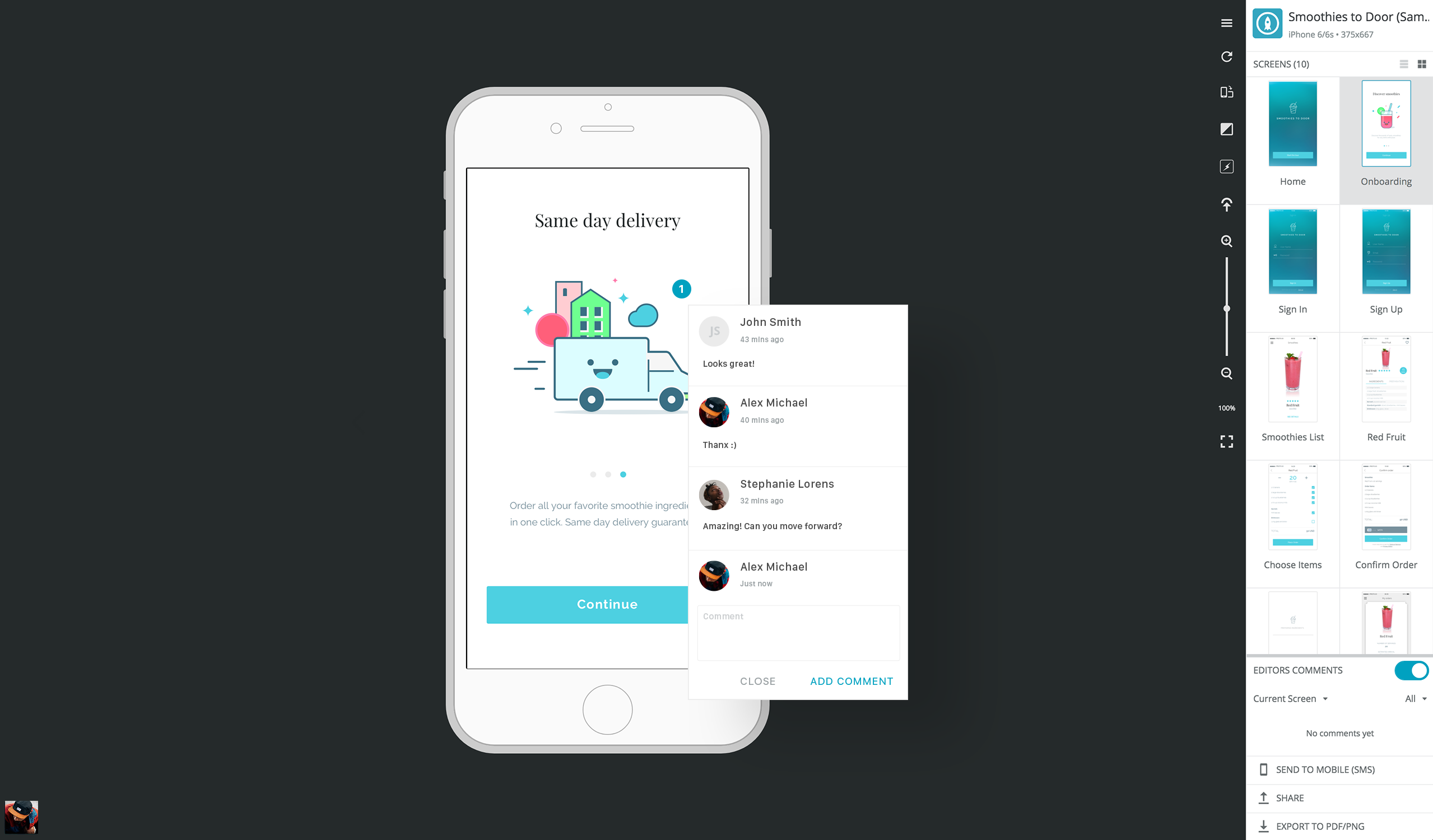Prototyping is an essential part of creating an app. It helps get stakeholders aligned, gives potential investors something tangible to get behind, and simply makes mobile app development much more streamlined. Rapid prototyping, in particular, enables teams to get more done faster. To help designers, developers, and entrepreneurs alike tap into the benefits of rapid prototyping, we’ve put together a quick guide to the tools that you need to know to make it a reality.
Before we dig in, it’s important to discuss why rapid prototyping is necessary. If you are an entrepreneur or someone who has insight into your design budget, you know that time is money. Whether you are trying to get an app off the ground, run a small startup, or manage a team at a corporation, speed is key. Getting to market with a great product in a short amount of time will help you beat competitors and become top of mind for your customers, not to mention save designer and developer resources at the outset and down the line. Besides, it will be much easier to get feedback from stakeholders and potential users when they can hold a version of the app in their hands and play around with it.
With mobile app design moving at such a rapid pace, speed often trumps perfection. You can always go back and make tweaks to your design afterward, so here’s how you can get your app to market faster from the beginning.
The Three Stages of Rapid Prototyping
Rapid prototyping in app design consists of three parts: planning, prototyping, and testing, and feedback. You can cycle through these three stages as many times as you need to. The overarching idea is to generate and explore as many options as possible in the shortest amount of time. Anyone who runs a startup will be familiar with the phrase “fail fast.” That is exactly the point of rapid prototyping: you want to exhaust all viable options quickly to figure out the best path for your specific app. That way, you can get on to building the actual product, get to market faster, and start generating revenue already.

Planning
In the ideation stage, you’ll want to quickly explore your options to determine the best way forward. This will incorporate any research you’ve done, any users you’ve surveyed, or general best practices from your industry. This stage also provides a long list of alternative ideas that you can come back to at any time in case the route you select with your stakeholders doesn’t work for target users. Once you decide on the direction you want to start outgoing, it’s time to make something everyone can try out.
Prototyping
Sketches or wireframes on paper are a nice place to start, but a prototype will take you much further. It will allow you to demonstrate how your app might work. With full functionality, you’ll have a better opportunity to get it into the hands of potential users and get a more accurate read on what they really think of it. Which brings us to…
Testing and Feedback
Your users are the ultimate deciders of your product roadmap. “Build it, and they will come” is about as incorrect as a saying can get. You need user input at several different touchpoints during app development to make sure you are actually making something they want and will use. Otherwise, you will spend time and resources you can’t get back on a product that will fall flat. No entrepreneur wants to deal with this type of avoidable failure. Instead, invite your friends, family, target users, and more to try out your prototype and give you genuine feedback.
In addition, you’ll want to make sure stakeholders are aligned as well. The best prototyping tools enable commenting so that no matter where team members, investors, or clients are, they can see the most up to date version of the prototype and be able to provide their feedback. This shareability is especially important for distributed or temporarily remote teams.
Hector Harris-Burton, Design Executive at Imaginaire, finds the testing stage incredibly valuable. “By getting someone to offer some constructive criticism, you’ll get better at what you’re doing and often impress the client with what you have to show them. This means that everyone wins, and you can develop as a person and within your career. There will always be something that you miss, it’s inevitable, and so it’s always better to get a fresh pair of eyes rather than being offended if someone sees something that needs improving.”
Whether they are your clients or your potential users, mobile app prototyping makes it possible to get crucial feedback that can help you get to the final version faster than ever. So how can designers, developers, and entrepreneurs come together on these three stages of rapid prototyping to ensure that they explore all the best ideas for their mobile app in less time?

Templates for Rapid Prototyping
Rapid prototyping requires a stable of tools to bring a mobile app to life. These tools need to integrate with one another or at the very least, play nice together.
Templates are key to getting more done faster and ensuring consistency. The templates available to you might differ by the prototyping product you choose, but they are time savers nonetheless. Harris-Burton tells us, “I have a template for a number of different project types. This might be for web design, a PWA project or a mobile app, each one has a set of standard sizes and elements that might be needed. By doing this I can streamline the process of the design set up and get to the exciting part of actually designing the project.”
Proto.io offers five ready-made template kits within our template library to help you prototype faster. Because there are many aspects of mobile app prototyping that are standardized. For example, screen sizes are standard when designing for the latest iOS. So having these dimensions in the back pocket of your prototyping tool is especially helpful for putting the rapid in “rapid prototyping.” Templates are just one such shortcut that you should make use in rapid prototyping. The idea is to reduce the amount of time it takes to create a minimum viable product. Anything that allows you to further streamline the process is a great asset to leverage.
How Proto.io Can Help
We’d be remiss if we forgot to tell you that here at Proto.io we offer code-free high fidelity prototypes that enable rapid prototyping. We help companies and individuals alike get closer to their dream app by turning ideas into a fully functional user experience in less time. Beyond validating ideas faster and fostering communication between stakeholders, our prototyping tool also allows you to test the flow, interactions, and animations of your app without deploying any engineering resources. This enables you to save resources and meet your launch date easily. (Give Proto.io a try for free for 15 days.)

Final Thoughts
Rapid prototyping is essential for any team or individual that wants to make their app right the first time. It can be so frustrating to pour countless hours into designing and coding, just to have potential users give negative feedback. In order to avoid this, rapid prototyping is the perfect solution to explore a number of ideas in a short period. Getting feedback and buy-in from stakeholders and potential users with the help of a high-quality prototype makes costly last-minute changes a thing of the past. Give rapid prototyping a try today to make sure you can bring your app idea to life in no time.
What tools do you leverage in rapid prototyping? Let us know by tweeting us @Protoio.
Proto.io lets anyone build mobile app prototypes that feel real. No coding or design skills required. Bring your ideas to life quickly! Sign up for a free 15-day trial of Proto.io today and get started on your next mobile app design.






